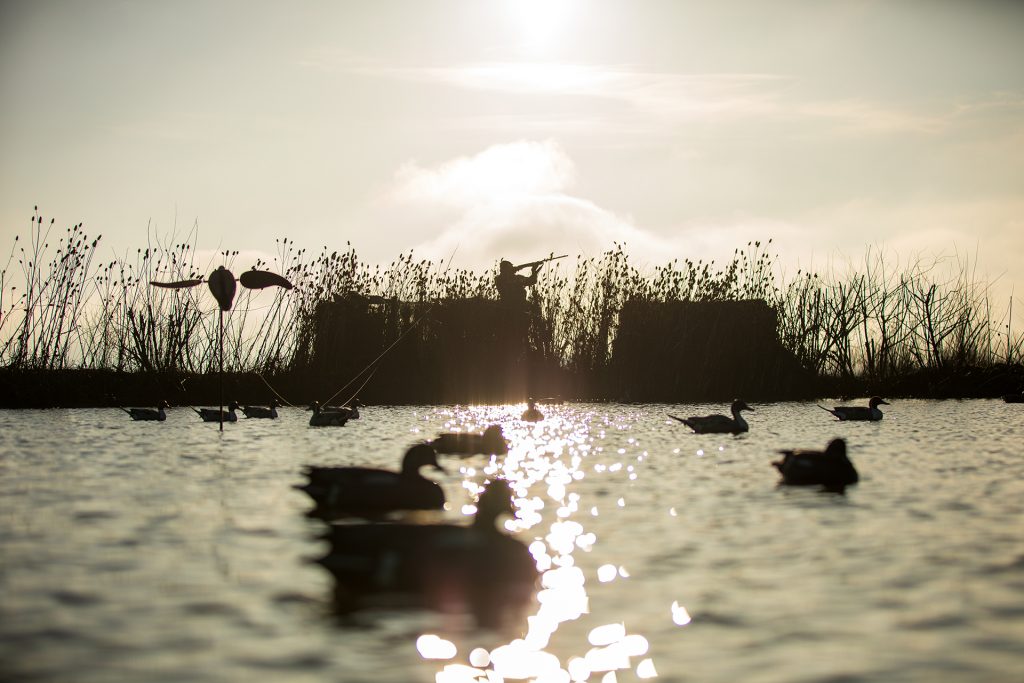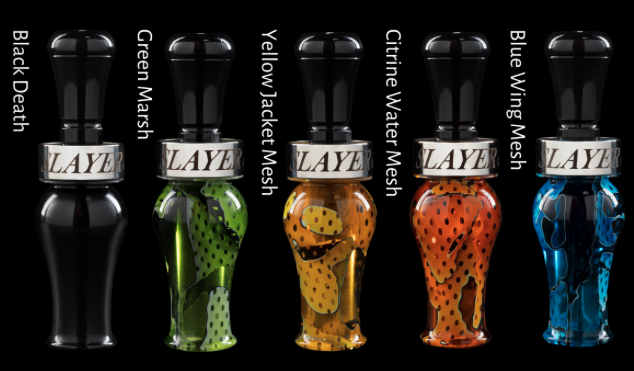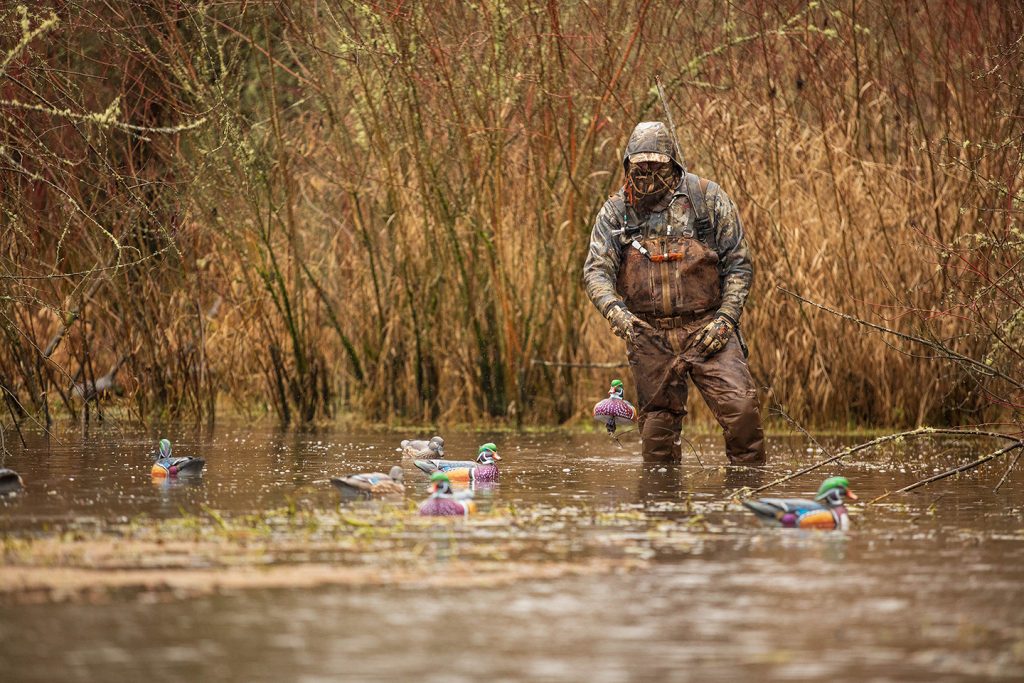There’s more to killing ducks than setting out a dozen fakes, hitting a few hail calls, and going bang. Winning waterfowl hunters analyze and make smart moves. Heed the to-come duck tips, and fill more limits.
by Scott Haugen
Last season, a buddy invited me to hunt ducks with him. We got into his blind early in the morning, set out the decoys, and listened as duck wings fluttered overhead in the dark. It was going to be an epic morning, or so I thought.
We shot a few ducks in the first 15 minutes, but the birds wouldn’t commit.
“I’m going to go move some decoys around,” grumbled my friend. He did. It didn’t help.
“What do you think the problem is?” he asked me. “Ducks have been acting like this the past two weeks.”
It was late November, primetime in our area. “Do you think I need some new decoys?” he continued.
Black Holes & Edges
I’d brought along three dozen Big Al’s Silhouette Mallard Decoys and went to add them to the edge of the flooded field we hunted. I set them out, and they looked good. However, when I turned around and looked back at my buddy in his blind, it hit me.

“Come out here; take a look at this!” I hollered to him. He did. Looking back at his blind, he saw a big black hole and sharp edges on his side.
“Do ya think that’s the problem?” he asked.
“There’s only one way to find out,” I offered.
We quickly cut a bunch of brush, filled in the black hole, and roughed out the side and top of his blind. With the black hole gone and the edges blending in with the surrounding habitat, the next flock of mallards dove into the decoys. As did the next flock. We soon had our limits. My buddy had great shooting at decoying ducks for the rest of the season. He kept all my silhouette duck decoys, too. He was confident those had more to do with the success than the brushing-in of the blind.
Leaving The Spread
Another hunt I was on ended with the host pulling up the decoys at the end of the morning. We only shot a few birds as they were reluctant to come in. I was pleased to see the man pulling his decoys because only a few hunters in the area go to such effort. But when he pulled all five dozen floaters to the pond’s edge and left them, I was dumbfounded. Leaving them sporadically strewn about the bank was far worse than leaving them in formation until he returned to hunt the spot a few days later. Such neglect only educates already wary birds. When the man told me he always did that, I suggested that was likely why his season had been going so poorly.
Concealment & Aiming Too Early
Last fall found me backing away from a point of land where I left another hunter with a dozen decoys to hunt alone. The man had already missed many times from a layout, so I relocated him to what I figured would be a more accessible place to hit birds. The successive four flocks rapidly flared about 60 yards outside the spread. I eased closer to see what was happening. I found the man as far on the point as he could get — out of cover — resting the gun on his knee, taking aim at the birds. He stayed there when the next flock approached, and as soon as they came into sight, he started aiming at them 200 yards out. They flared, too. When I asked him what he was doing, he said he didn’t want to miss any more shots. Aiming at birds isn’t the remedy, and being fully exposed 10 yards from the closest decoy wasn’t helping. The man needed to spend some time busting clays.
Calling
One thing I need to improve upon is my calling. Being an average caller can have its benefits, especially if you know when to shut up. My calling approach is simple: If birds are passing by, not looking at the decoys, I call to get their attention, then stop and let the decoys do the work. Things I hear regularly are too much calling, poor calling that’s even worse than mine, and calling at the wrong times, like when birds have already committed or are circling directly over the blind. Calling can do more harm than good in some situations, so when birds are flaring, stop and ask yourself why. My approach is to use high-quality calls, don’t overdo it on the calling, then let the decoys do the finish work. I’ve been delighted with Slayer Calls The Ranger duck call. This double-reed acrylic call sounds fantastic, is easy to blow, and has an impressive range in wide open spaces and during intense storms.

Decoys
One of the most basic errors I see being made by duck and goose hunters is moving outside the blind when birds are in view. Blinds have a purpose, so stay in them, keep movement to a minimum, and remain concealed when birds are flying. Their eyes are far superior to ours. If they flare when directly overhead, be sure to cover the top of the blind, filling in any black holes birds might see from above.

If you’re confident you’re doing everything right, but birds simply aren’t decoying, change the decoy spread because sometimes decoys are the problem. The wind direction may shift, so you need to adjust the landing zones. Possibly, your spinner decoy is too much action for already-intelligent birds. Or you may need to add silhouettes to the shoreline to quickly increase the size of the spread and make it more visible.
On a hunt last season, my 82-year-old dad and I agreed not to shoot unless ducks were backpedaling into the decoys. Early on, we had multiple ducks landing on the outside edge of our spread, about 40 yards away. It was farther than we wanted to shoot, and the birds simply weren’t coming in tight to the spread. Dad suggested we take down our three wind spinner decoys. We did and opened up a couple of landing lanes in the middle of the decoys. We had our limits in less than two hours, and every bird dropped dead in the decoys.

Never Stop Trying
During a solo hunt last season, I had patterned ducks landing on the west end of a pond. Before daylight, I was set up, but no birds came in. Instead, they landed in the middle of the narrow pond, where I could wade. So, I relocated my decoys and one man blind. Ducks kept coming, but now they landed on the pond’s eastern edge, so I moved again. By this time, the sun was in my eyes, and ducks were flaring, so I moved the blind across the pond and got the sun at my back. I rearranged my dozen Final Approach Live Floating Wigeon Decoys, spacing them widely for ducks to land amongst. Then I put my half-dozen life-size mallard decoys tight to my blind. On shore, I put four dozen Big Al’s Silhouette Wigeon Decoys in a tight line to the east of me, along the shoreline. The scene of feeding and roosting ducks did the trick. Soon, I had a stud pintail, two greenheads, and four wigeons to show for it.

If you want to see how effective your decoys are:
- Refrain from pulling the trigger at the start of the hunt.
- Study how approaching ducks respond to your spread.
- Change something if they don’t work and land precisely where you want them to or prematurely flare.
- Don’t wait.
- Once you notice birds hesitating, make adjustments.
As we enter primetime duck season, feel free to make changes if birds aren’t working as you’d hoped. But make sensible changes. Study birds to see when and understand why they may be reluctant to commit. Look at the big picture, but don’t neglect the details because often times, it’s a slight change that can make a big difference in your duck hunting success.





